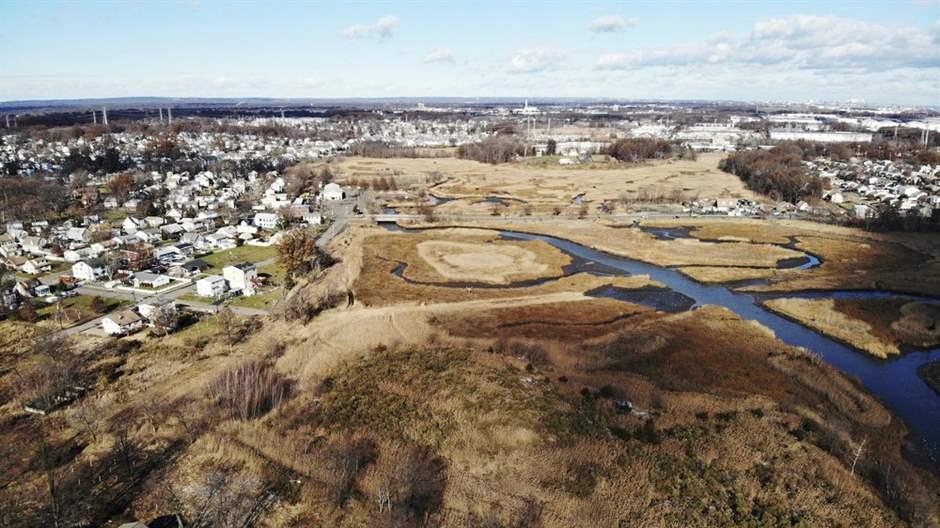Long after the COVID-19 pandemic ends, state governments will continue to face monumental challenges, including what promises to be a sustained future with increased climate-related disaster risks. This grim reality, long forecast by climate scientists, has been made clear yet again in 2020, a record year for wildfires and hurricanes. And this problem is growing at a time when states are already grappling with budget shortfalls that are unlikely to ease soon.
To help, The Pew Charitable Trusts launched the State Resilience Planning Group (SRPG), a forum for officials from numerous states to collaborate on innovative practices and lessons learned as they develop and implement comprehensive resilience plans.
Since 2019, more than 10 states have tasked officials, through executive or legislative action, with coordinating across agencies and localities to identify strategies to better prepare communities for climate-related hazards. The SRPG provides a peer network for state officials from a diverse slate of coastal and inland states, each in various stages of developing approaches to reduce impacts from multiple types of flood risk—including tropical storm surge and riverine and flash flooding. The group has members from 12 states and has continued its work virtually throughout the pandemic.
This fall, Pew hosted SRPG expert discussions focused on three cross-cutting areas: measuring resilience; identifying sources of funding and financing; and developing residential buyout strategies.
Measuring success
In the first roundtable session, SRPG members identified the need to define and measure both progress toward goals and the impact of those actions over time—both of which will facilitate public transparency and continual refinement of resilience-building plans and projects. Informed by presentations from the Urban Institute and the Sustainable Business Network, the group explored tactics to capture and communicate the benefits of investing in flood-risk reduction activities. For example, state officials learned about Philadelphia’s efforts to measure the environmental and social benefits of Green City, Clean Waters—a 25-year plan to invest in green infrastructure and reduce stormwater runoff, while offering co-benefits, such as increased recreational spaces and neighborhood aesthetics.
Funding and financing for resilience
At the second roundtable, to help address budget concerns across the SRPG, officials with the Raleigh, North Carolina, city government shared creative approaches to funding projects, and resilience expert Joyce Coffee spoke on innovative financing for resilience-building activities. The speakers reflected on the importance of empowering communities in resilience efforts, for example by helping with project development and funding applications. Clearly defined initiatives and planning efforts could, in turn, help spur private investment.
As an example of this, Wayne Miles, stormwater engineer for Raleigh, discussed lessons from the Capital Boulevard Corridor project, a large-scale, multiyear redevelopment effort to reconfigure the corridor for pedestrian, bike, and vehicle transportation. Miles said the project has successfully stacked funding sources to achieve economic, environmental, and resilience objectives, and has drawn more than $85 million in investment to install greenway trails, restore flood plains, and enhance stormwater systems to address flood concerns. The project, funded by multiple local, state, and federal sources, has already become a driver for economic growth within the corridor.
Preparing buyout strategies
Strategies to relocate residents out of high-flood-risk areas and convert properties to open space are effective tools to reduce the costs and impacts of flooding, but require extensive planning and preparation. In the third roundtable, experts from Nashville, Tennessee, shared the benefits of helping local government officials and residents plan and implement buyout strategies to remove people and structures from risky areas before the next flood. Nashville’s practice of proactive identification of at-risk properties has helped the city remove 400 homes from the flood plain and create 210 acres of open space, transforming some areas into community gardens or greenway trails.
Effective engagement and support for socially vulnerable and underrepresented communities emerged as a common theme across all three areas of emphasis. In the discussions, experts and state officials expressed the importance of dedicating time and resources to outreach and helping localities identify needs and develop proposals for funding. The group emphasized the need to empower the most socially and environmentally vulnerable communities as a core value in building more resilient states that are better prepared to withstand flood events.
Despite the myriad challenges brought about through the COVID-19 pandemic, several states—including West Virginia, New Jersey, and Maine—pressed forward with essential flood resilience planning efforts over the course of this year. Pew will continue to work with these states and others across the country, expanding on the SRPG’s work to develop comprehensive strategies that can better integrate resilience and prepare communities for increasing flood risks in the future.
Laura Lightbody is the director and Sarah Edwards is a senior associate with The Pew Charitable Trusts’ flood-prepared communities project.
"network" - Google News
December 15, 2020 at 03:49AM
https://ift.tt/2Wfa5N1
Pew-Led Network Helps States Plan for Rising Costs and Impacts of Flooding - The Pew Charitable Trusts
"network" - Google News
https://ift.tt/2v9ojEM
https://ift.tt/2KVQLik
Bagikan Berita Ini















0 Response to "Pew-Led Network Helps States Plan for Rising Costs and Impacts of Flooding - The Pew Charitable Trusts"
Post a Comment